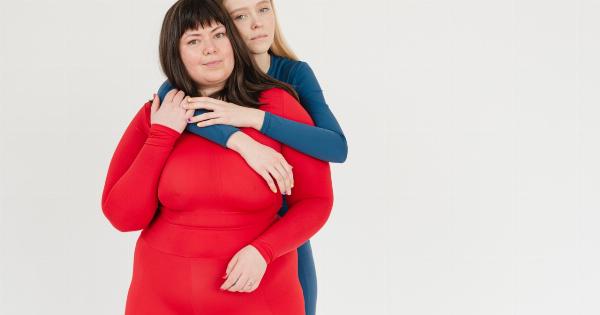When you think of roses, you likely envision their vibrant colors and delightful fragrance.
However, did you know that the color of a rose can hold significance beyond its aesthetic appeal? In fact, research suggests that the color of roses can have an impact on our physical health. This fascinating connection between rose color and physical well-being is an intriguing area of study that delves into the realm of psychology and its effects on the body.
In this article, we will explore the various colors of roses and their potential implications for our overall health.
The Psychology of Color
Before delving into the specific impacts of rose color on physical health, it is essential to understand the psychology of color. Colors have long been recognized for their ability to influence human emotions and behaviors.
Different hues evoke distinct feelings and perceptions, ultimately playing a role in our overall well-being. The study of color psychology investigates the physiological and psychological effects of color, shedding light on its profound impact on the human mind and body.
The Symbolism behind Rose Colors
Roses, often regarded as the epitome of beauty and love, come in an array of captivating colors. Each color holds unique symbolisms and associations, which further enhance the significance behind the choice of a particular rose hue.
Let’s explore some of the most popular rose colors and their meanings:.
1. Red Roses
Red roses are classic symbols of love and romance. They are often exchanged on special occasions like Valentine’s Day or anniversaries. Red is a color associated with passion, desire, and strong emotions.
Research has shown that exposure to the color red can increase heart rate and blood pressure, which could be attributed to the perception of heightened romantic feelings and excitement.
2. Pink Roses
Pink roses signify admiration, gentleness, and gratitude. This soft, delicate color is often associated with femininity and sweetness.
According to color psychology, pink has a calming effect on the human mind and can promote feelings of tranquility and relaxation. This can have a positive impact on our physical health by reducing stress levels, improving sleep quality, and boosting overall well-being.
3. White Roses
White roses symbolize purity, innocence, and new beginnings. This timeless color is often used in weddings and represents a fresh start or clean slate.
White is known to evoke feelings of cleanliness and simplicity, creating a sense of calmness and clarity. Studies have shown that exposure to white or light colors can lower blood pressure and heart rate, contributing to a state of relaxation.
4. Yellow Roses
Yellow roses are associated with joy, friendship, and optimism. This vibrant color is known for its energizing and uplifting properties. Yellow is commonly linked to happiness and can stimulate feelings of warmth and cheerfulness.
Research suggests that exposure to yellow can increase serotonin levels in the brain, which may contribute to an improvement in mood and overall mental well-being.
5. Orange Roses
Orange roses symbolize enthusiasm, fascination, and creativity. This bold and vibrant color is often associated with excitement and positive energy. It is believed to awaken the senses and stimulate mental activity.
Orange is known to be an appetite stimulant, which could potentially have an impact on physical health by encouraging a healthy appetite and promoting proper nutrition.
6. Lavender Roses
Lavender roses embody enchantment, love at first sight, and elegance. This soothing color is often associated with tranquility and relaxation.
Lavender has been proven to have a calming effect on the body and mind, helping to reduce stress and anxiety levels. By promoting a sense of calmness, lavender roses can contribute to improved sleep patterns and overall physical well-being.
7. Blue Roses
Blue roses are a rarity in nature, but their artificial counterparts represent mystery, the unattainable, and the extraordinary. This exceptionally calming color is often associated with serenity, harmony, and spiritual growth.
Research has indicated that exposure to blue can have a significant impact on reducing stress and promoting relaxation, leading to various health benefits such as improved cardiovascular function and decreased muscle tension.
8. Green Roses
Green roses are symbolic of fertility, renewal, and abundance. This color represents nature and the vitality it brings. Green is known to have a refreshing and soothing effect on the human mind and body.
Research suggests that exposure to green can help alleviate stress, enhance mood, and boost overall mental well-being. This, in turn, can have positive effects on physical health and vitality.
9. Black Roses
Black roses are often associated with mystery, death, and mourning. Although not naturally occurring, black roses have symbolic connotations. The color black is known to evoke strong emotions and can reflect a sense of power and intensity.
However, it is important to note that black roses are mainly cultivated for aesthetic purposes and do not possess any inherent physiological effects on physical health.
10. Multicolored Roses
Multicolored roses, also known as rainbow roses, combine multiple hues to create a vibrant and visually stimulating display. Each color within a multicolored rose holds its own significance, allowing for a diverse range of emotions and associations.
These roses can evoke a sense of excitement and joy, potentially contributing to positive mental and physical well-being.
Conclusion
The color of a rose can convey powerful messages and evoke a wide range of emotions. From the passionate red to the serene lavender, each shade holds unique symbolism and potential physiological effects.
While the impact of rose color on physical health may be subtle, color psychology suggests that exposure to certain hues can influence our emotions, behaviors, and overall well-being. Incorporating roses of various colors into our surroundings may contribute to improved mood, reduced stress, and enhanced physical health.
So next time you receive or give roses, take a moment to appreciate their colors and the potential impact they may have on your mind and body.































